A Balanced Heart Is A Healthy Heart
Are you living from the heart? Find out. Take our brief quiz to get your own #LiveFromTheHeart tip sheet.
Take the quiz!
By Emily Murphy | Posted Jun 4, 2024
Regenerative gardening scales practices common in regenerative farming. But what does this mean and how does it work?
You may have heard the term “regenerative” floating around on the airwaves. It’s the latest buzzword in the sustainability world and it’s often referenced in conversations revolving around regenerative organic agriculture. It’s also the central theme in the film Biggest Little Farm and the Kiss the Ground movie. (If you haven’t seen Biggest Little Farm, I highly recommend it.)
At its core, regenerative organics is a set of nature-based practices that work in concert with ecological systems, such as the carbon cycle, food webs, and growing spaces.
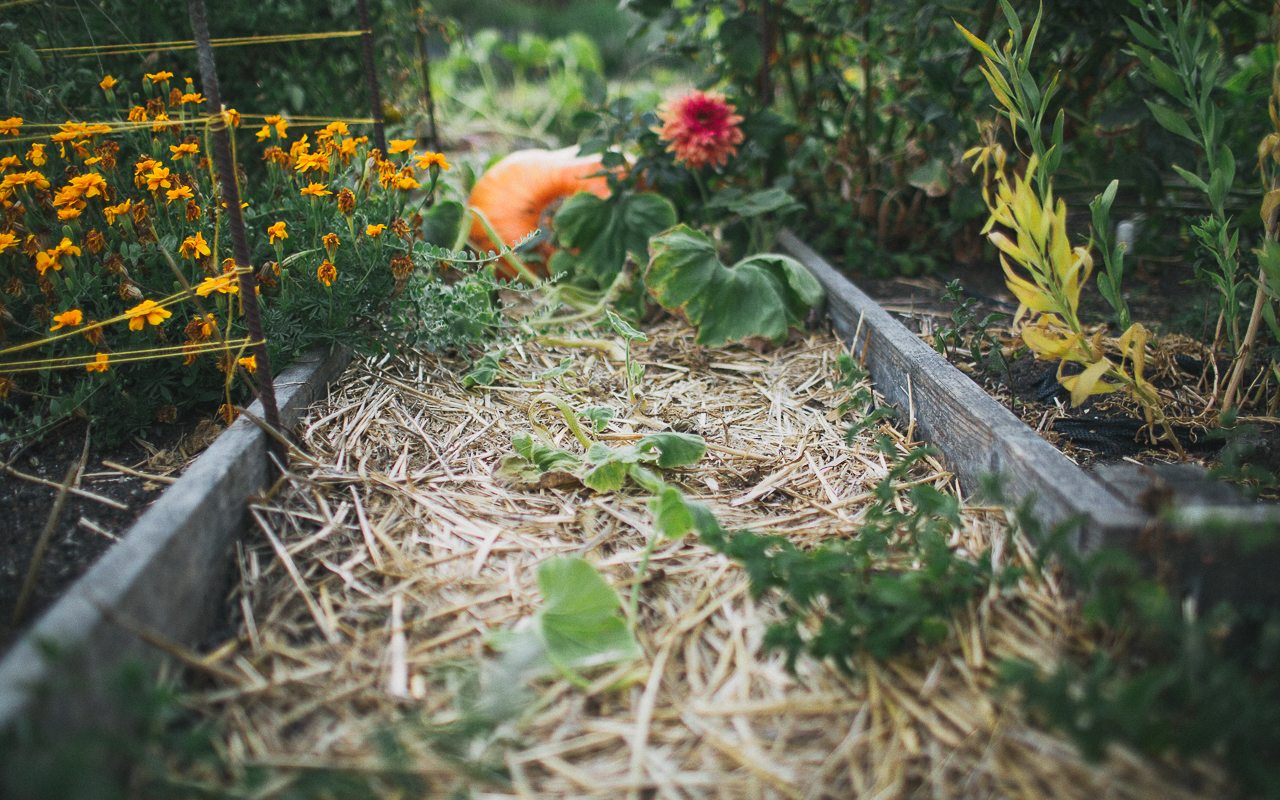
Photo by Emily Murphy
Before diving into the best practices of regenerative gardening, let’s back up for a moment. First, to understand regenerative gardening, we need to rethink our relationship to carbon.
Carbon has a bad rap thanks to its ever-increasing presence in the atmosphere, but what we forget is that carbon is an essential building block of life. (All living things contain carbon.) It’s also important to remember that carbon’s primary home is in the ground. And! When we feed carbon to the soil, we’re feeding the soil ecosystem which in turn provides a number of benefits.
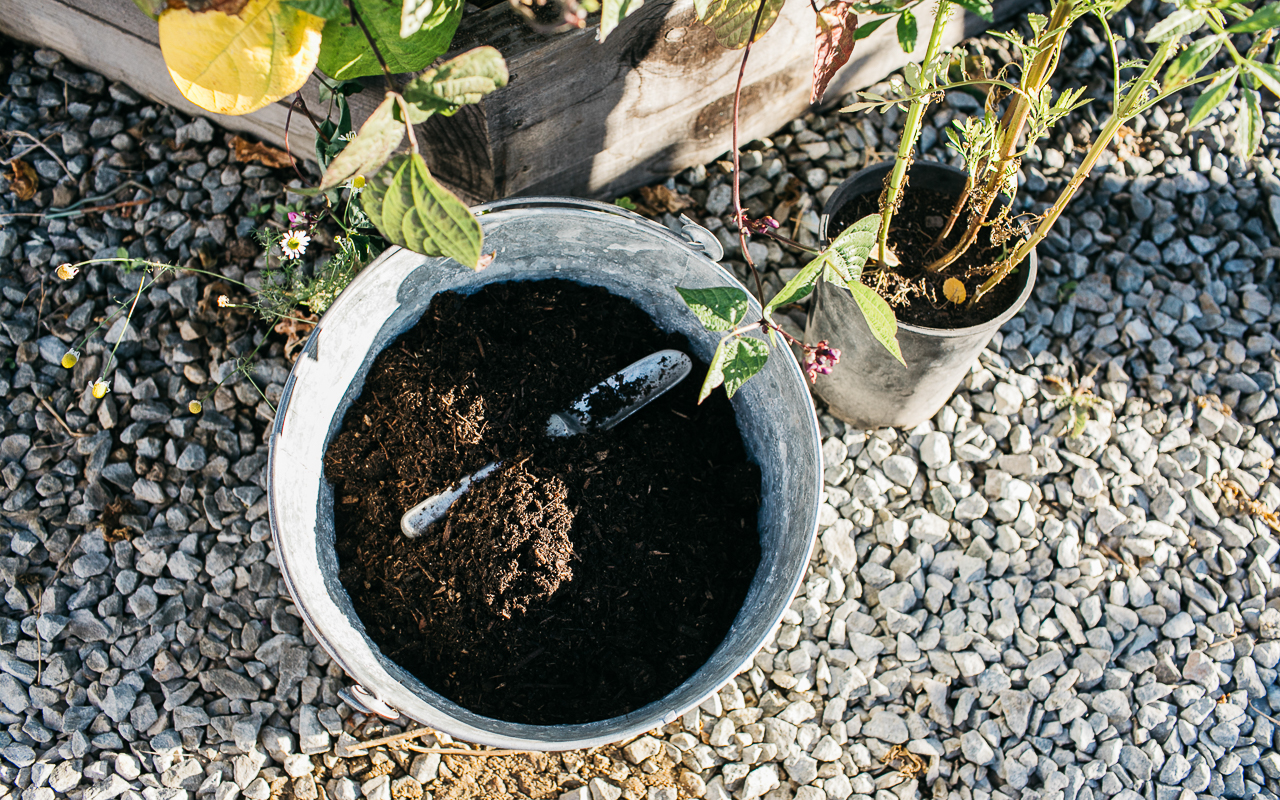
Photo courtesy of West Cliff Creative

Photo by Emily Murphy
We often think of compost as the perfect plant food, and it is in a complex, layers of an onion sort of way. But really, compost is the perfect soil food.
To help make sense of this, consider the ingredients needed to feed a compost pile. They’re commonly referred to as “greens” and “browns.” Greens are nitrogen-rich materials such as food scraps and browns are carbon-rich materials such as leaves. A good compost pile is made with about 3 or 4 parts browns to 1 part greens. This is the basic ratio microbes need to churn away in their life cycles, metabolize food into energy, and turn raw materials into finished compost.
It’s the same in nature.
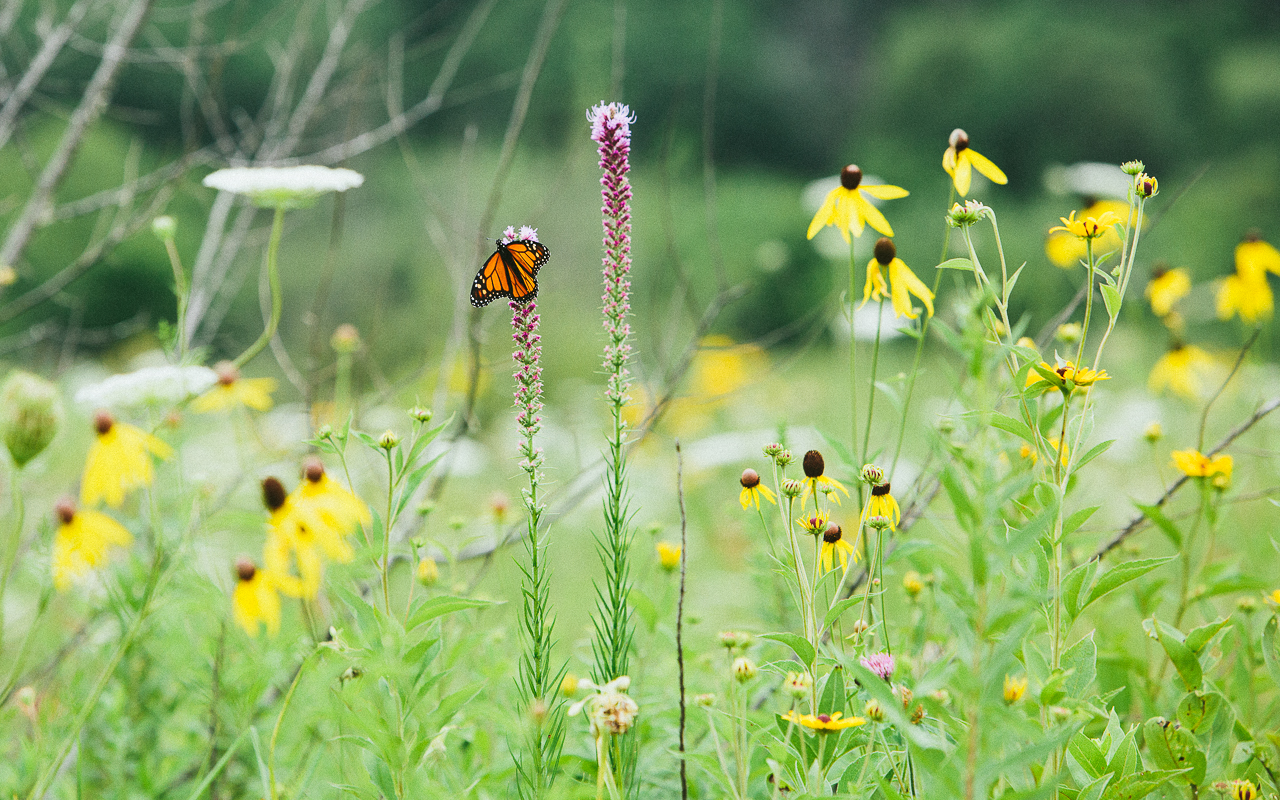
Photo by Emily Murphy
For instance, in nature, tree leaves, twigs, and other plant materials fall to the ground. Animals eat, poop, roam arund, and eventually die. Collectively these activities and materials feed the soil ecosystem. And, in turn, these activities feed plant life and, life above ground. It’s a wonderful complex, yet simple, cycle.
So, with regenerative gardening, we’re simply doing our best to mimic nature and feed our gardens and landscapes the same way nature would if given the chance.
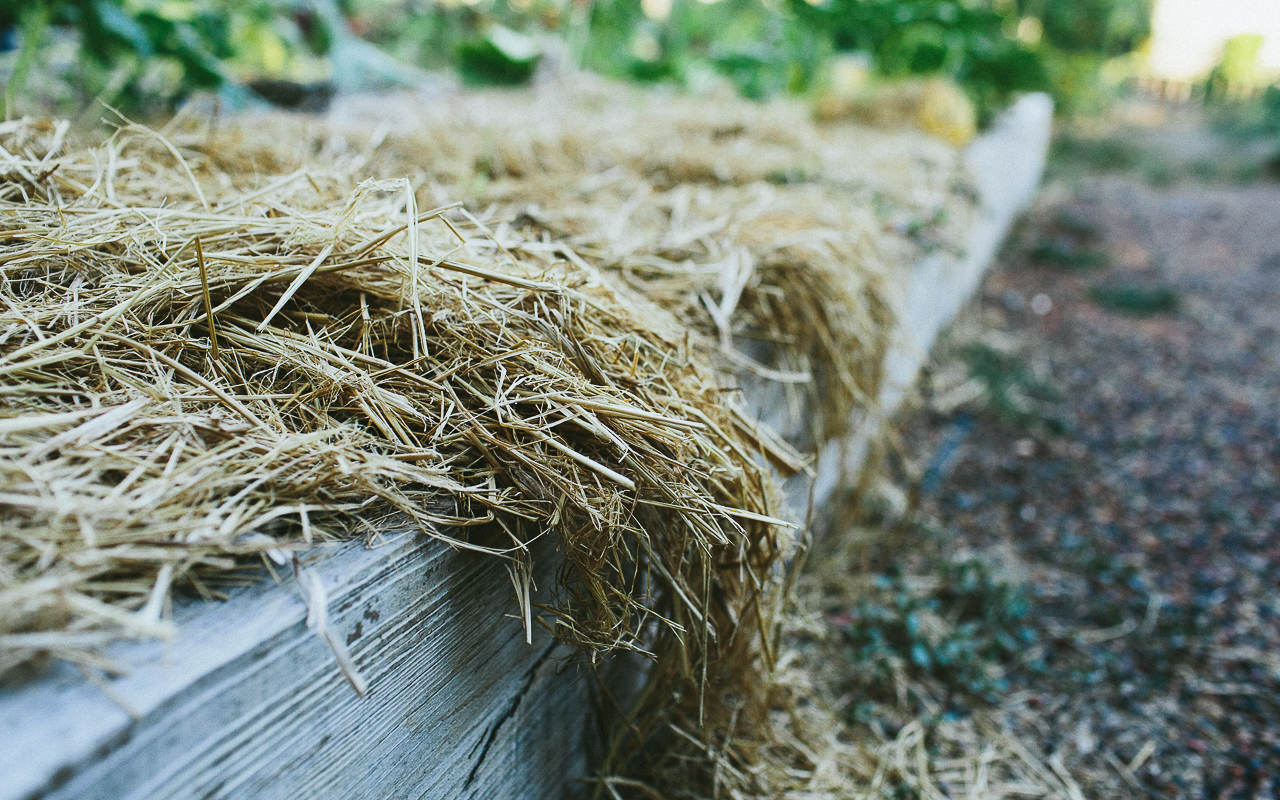
Photo by Emily Murphy
Cover Ground. Apply compost and other carbon-rich materials to the soil surface to protect and feed it. Because, remember, there’s a whole world beneath our feet. Think of it as an underground superhighway filled with bacteria, fungi, all sorts of other creatures plus plant roots. When we feed the soil, we’re feeding this system.
Practice no dig gardening. No dig gardening is a framework for disturbing the soil as little as possible and for protecting the underground superhighway.
Learn more about No Dig Gardening.
Keep living roots in the ground. As you know, plants capture solar energy and convert it into carbohydrates that are the food of life. From here, they create a myriad of phytonutrients essential for growth and survival. They also send some of these sugars and phytonutrients down into the soil via their root systems to barter with soil microbes for hard to find moisture and soil nutrients. When we maintain living roots in the ground by growing ground covers, cover crops, and perennials with different rooting depths, we’re maintaining this relationship. And, as it turns out, this relationship is key to not only returning carbon to soil, but storing it there as well.
(Look for my 2022 book for more details on how this works.)
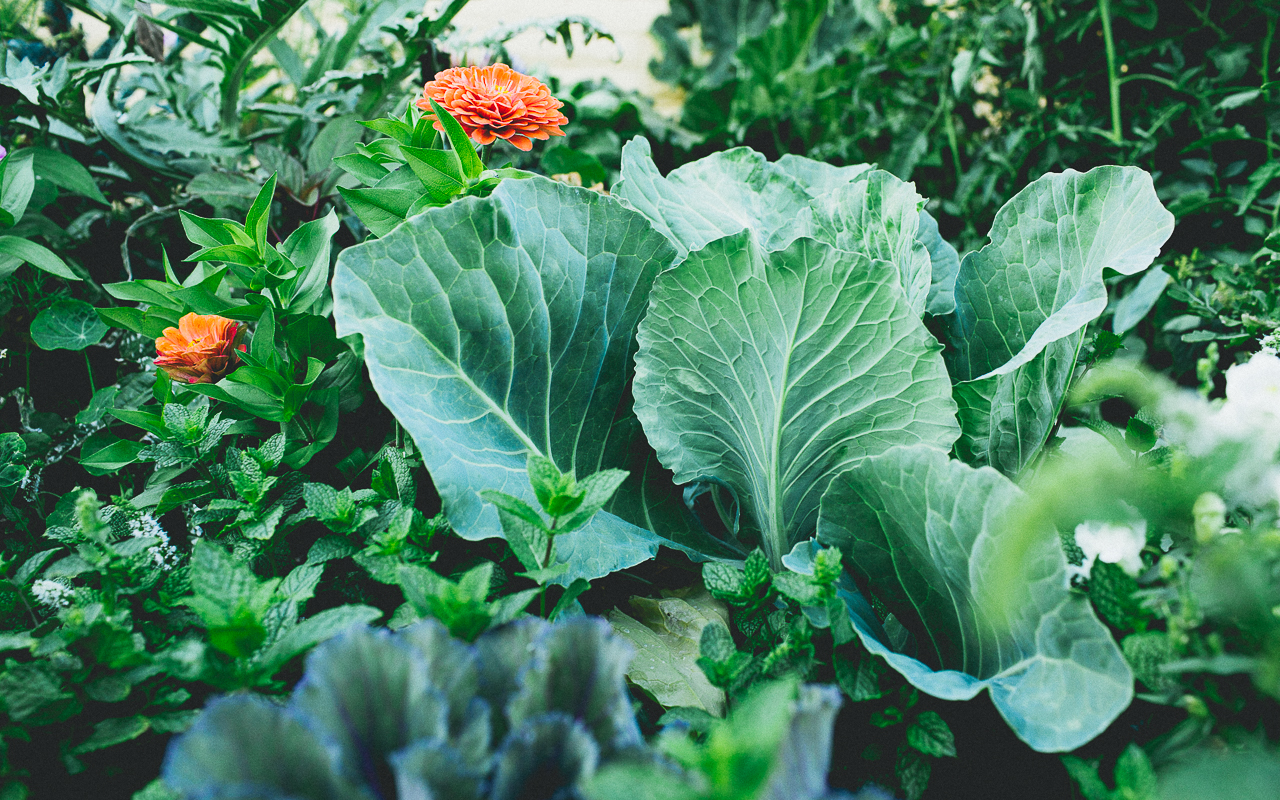
Photo by Emily Murphy
Grow a diversity of plants. Plants have co-evolved with animals and microbes from the beginning and each have unique and often highly specialized relationships. When we grow a diversity of plants, we inherently invite and foster biodiversity which leads to the resiliency of ecosystems.
Plant natives. Plants native to your region are the life support systems of animals such as essential pollinators that are, again, native to your region.
Don’t forget perennials. While many kitchen vegetables are annuals, it’s important to create space for perennials. Consider adding a perennial border comprised of plants of varying sizes and heights (because the root systems of plants are often a reflection of growth above ground). Or, swap your lawn for a perennial garden that’s filled with 50% or more native plants.
Grow organic. Pesticides, herbicides, and synthetic fertilizers kill indiscriminately and compromise biodiversity. So, the trick to managing issues such as a rush of aphids or cabbage worms, is to foster soil, grow a diversity of plants, companion plant, and rely on barriers.
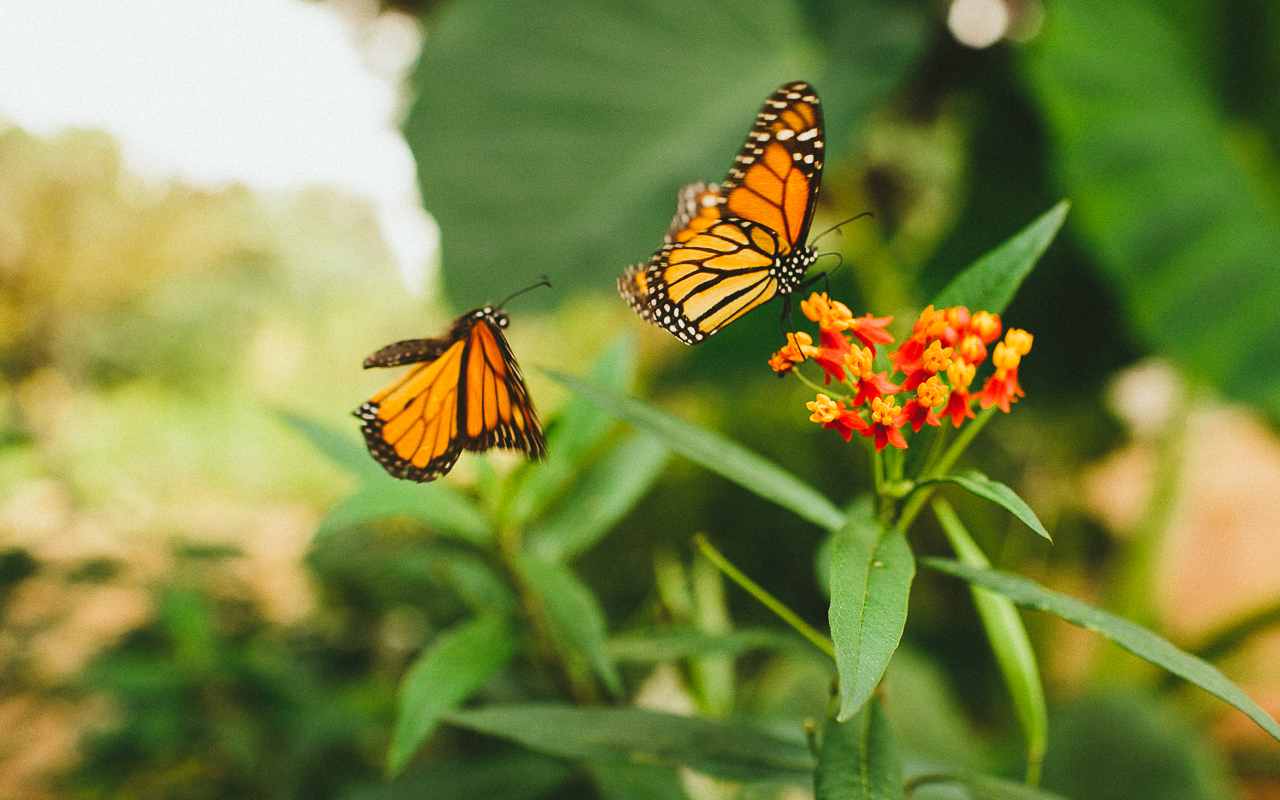
Photo by Emily Murphy
What’s important to note is that, while regenerative organics is the hot topic in the sustainability world, it asks us to think beyond sustainable.
When we employ the principles of regenerative organics in farms, gardens, and cityscapes, we’re empowered with the potential to return carbon to soil and improve conditions for nature to rebound and do what it does best — grow!
This article first appeared on passthepistil.com in March 2021 and was reproduced here with the consent of the author.